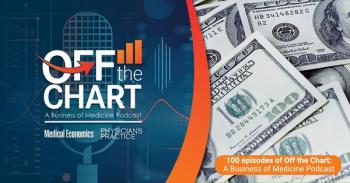
Osteopathic physicians, med students top 200,000 in U.S. medical workforce
Key Takeaways
- Osteopathic medicine has surpassed 200,000 members, with DOs making up 11% of the U.S. physician workforce.
- The profession emphasizes a whole-person approach, with 53% of osteopathic candidates matching into primary care residencies.
American Osteopathic Association notes historic milestone as profession continues growth.
Osteopathic medicine
There are 207,158 doctors of osteopathic medicine (DOs) and medical students, with 167,216 living DOs across the United States, according to the “2025 Osteopathic Medical Profession Report: Growing to meet our nation’s healthcare needs.” The physicians make up approximately 11% of the nation’s physician workforce.
“Surpassing 200,000 osteopathic physicians and students is a powerful testament to the growing trust patients have in our whole-person approach to care,” AOA President Robert G.G. Piccinini, DO, D.FACN, said in a news release. “Our profession continues to evolve while staying true to the values that define osteopathic medicine — empathy, connection, and quality patient care.”
Approximately 40,000 medical students are enrolled on 71 campuses of 44
The profession has grown since frontier physician A.T. Still, MD, DO, established its founding principles and the first school of osteopathic medicine. Since 1935, AOA’s first year of records, osteopathic medicine has added 158,000 doctors. In spring 2025, almost 9,000 new DO graduates entered the workforce.
The future of primary care
Osteopathic physicians ranked at:
- 33,874 family medicine physicians
- 23,224 internal medicine physicians
- 9,717 of pediatricians
This year, 53% of osteopathic candidates matched into primary care residency programs.
“As the U.S. faces increasing physician shortages, DOs are stepping up to meet that demand,” AOA CEO Kathleen S. Creason, MBA, said in the news release. “From rural clinics to leading hospital systems, osteopathic physicians are ensuring quality care reaches every community. Osteopathic medicine continues to attract the next generation of health care leaders who value patient-centered, preventive care.”
In medical education, there were nine osteopathic schools among the top 20 producing graduates in primary care, and six of those were among the top 10, according to the U.S. News & World Report 2025 Best Medical Schools Rankings.
Top specialties
As for specialized medicine, 45% of DOs practice in non-primary care specialties. At the top of that list is emergency medicine, with 12,408 physicians. Other leading specialties are anesthesiology, obstetrics and gynecology, psychiatry, and general surgery.
“As the demand for highly-qualified physicians continues to grow, DOs are playing an increasingly critical role in both primary care and specialized fields,” the report said. “The whole-person approach to care, combined with rigorous medical training, positions DOs well to meet the complex needs of today’s patients.”
Women in medicine
In the osteopathic physician workforce, 45% are female, and among them, 70% have graduated in the last 14 years. There are 47,623 female osteopathic physicians younger than 45 years of age in active practice.
A full 55% of all osteopathic medical students are women. That has increased 5% since 2024, according to the AOA figures.
Newsletter
Stay informed and empowered with Medical Economics enewsletter, delivering expert insights, financial strategies, practice management tips and technology trends — tailored for today’s physicians.

















